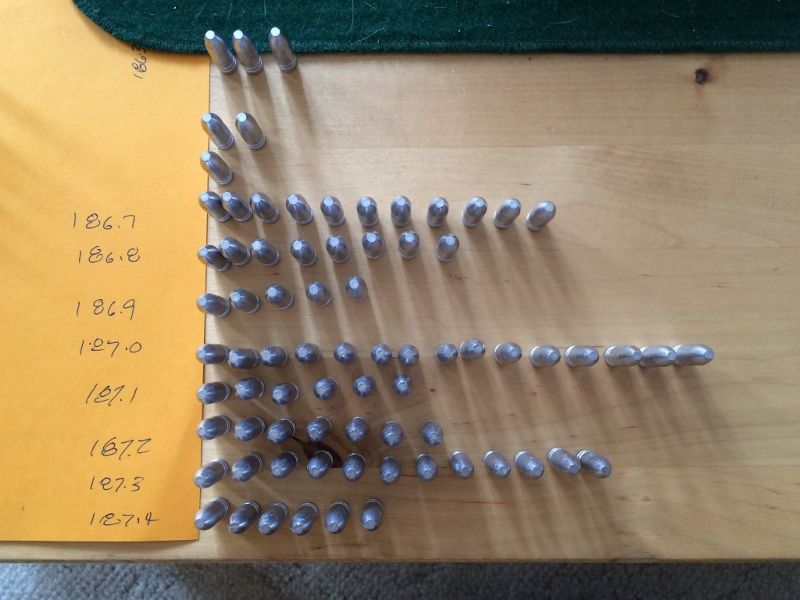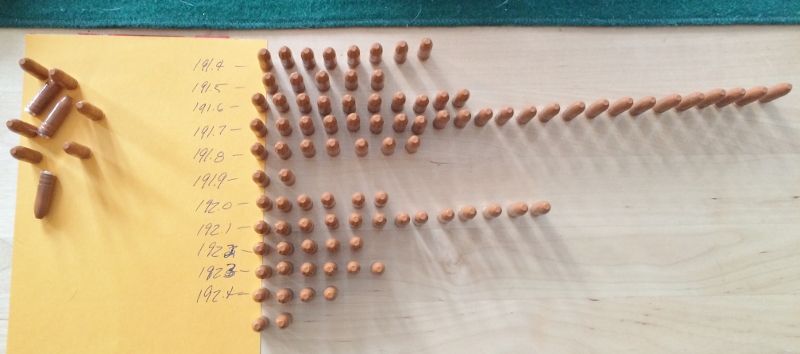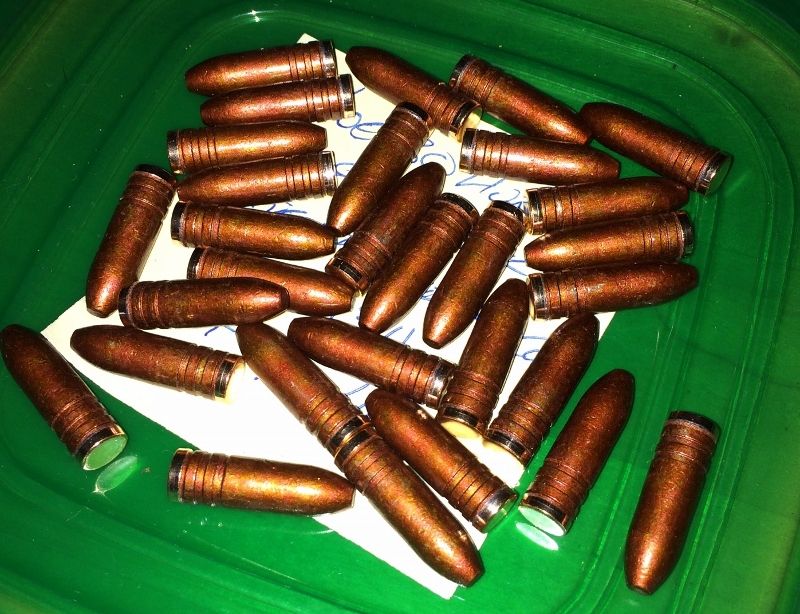OK, so back to consistency.
I want to take a minute and talk about a tool I have just started using a few months ago. That would be the NOE mold block thermometer.
Attachment 131921
I got this neat little unit from NOE bullet molds.
When I first started using it, I really couldn't tell that it was much use at all for telling me where to run my molds temperature. It turns out, I absolutely did not understand how this tool was to be used!
I decided to give it another shot, now that I have my process dialed into perfection using the bell curves as a training aid. I just plugged it in, and started observing what the thermometer would tell me. At first, there really wasn't much to see. The temperature would dip down about 5 degrees when the mold was shot full of alloy, and then it would raise five degrees after I dropped my bullets (there's a lag time between when you fill the mold and when that heat flows down to the probe in the bottom of the mold.)
No great shakes, I saw nothing really exciting. Until I needed a break and I put my mold back on the hotplate.
When I returned from whatever I was doing 15-20 minutes later, I saw that the temperature had dropped about 25 degrees low. "Huh. Interesting." I thought. "lets see how many pours it takes to get back up to the right temperature running at my normal cadence."
10-15 cycles later, it was finally back up to temperature.
"Interesting" I thought.
The next time, I turned my hot plate up higher by a little bit (just guessing).
When I returned from my break, the mold was 25 degrees hotter than when I left it.
"Huh." I thought. "lets see how many pours it takes to get back down to where it's supposed to be this time".
3-4 cycles later, I was back where I needed to be.
"Interesting." I thought.
I went along my merry way then casting along just as easy as you please, and then the phone rang. I answered it and stuck in my earbuds real quick and tried to do like Mrs. goodsteel and carry on a conversation while I was working. Unfortunately, I am not gifted with the ability to multitask like my beloved counterpart and I ended up missing a few cycles and the mold got cool. It took nearly 10 cycles to bring that mold up to temperature, jacking with the dwell time, and trying to control the sprue freeze time and talk about gunsmithing all at once!!!!
I ended up putting the mold back on the hotplate, and I was glad I dropped all those bullets on the bench while I was trying to get my mold back up to temperature.
When I picked it up off the hotplate, it was back about 20 degrees hotter than it should have been, and I was quickly back in business.
The moral of the story is a very important lesson that you can use even if you don't have all the fancy gadgetry that I have:
When you set you hot plate, just make sure that it is set hotter than it needs to be. When you start casting, just jump right into your preferred cadence and stick to it like glue, and drop the first 5 fills on the bench, or in your sprue pan or what have you, then just start dropping them in the bucket as if you had been doing so all along.
If at any point, you mess up, and suspect that your mold got cool, remember that pouring bullets will waste more time and alloy in the long run, than if you had just taken the opportunity to set the mold aside and stretch for a minute or ten.
Also, I want to tell you about a trick that I got from our very own Lars45 last time I was out at his place. I told him I have always had trouble getting dinged up bullets when I water drop, because they hit each other under water. I have tried the rag over the bucket with a hole cut in it, but that's a PITB, and I always end up using the rag for wiping a machine down or something when the pot is not in use. Also, I still get dinged up bullets when I use that method.
He told me to try floating sponges on top of the water and try to hit them with the bullets when I drop.
Fortunately for me, mrs.goodsteel had just recently bought a package of six dish sponges and I took the liberty of commandeering them for the cause (well almost six, shes getting smart, and had hidden one from me. LOL!)
Attachment 131922
This worked absolutely perfect. The bullets came out cleaner and prettier than ever, with nary a ding one.
Really good trick!!!

|
   
   
|


|






 Reply With Quote
Reply With Quote




















